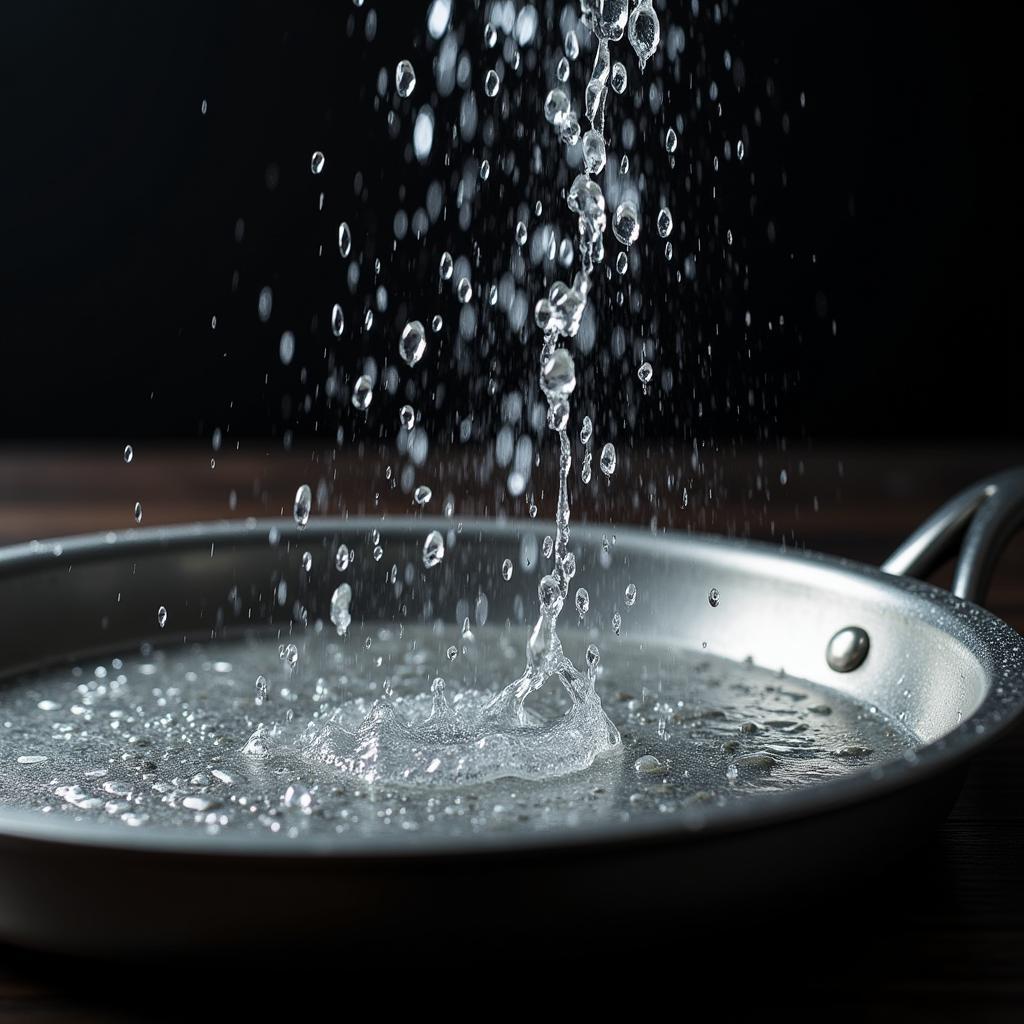Understanding how to properly heat your pans is a fundamental skill that can elevate your cooking from average to extraordinary. Whether you’re a seasoned chef or a home cook just starting out, the way you heat your pans directly impacts the flavor, texture, and overall quality of your food. From achieving a perfect sear on a steak to creating a delicate sauce, the right pan temperature is crucial.
The Science Behind Heating Pans
Before we delve into the specifics, let’s take a moment to understand why heating pans correctly is so important. When you apply heat to a pan, its molecules begin to vibrate rapidly. This increased kinetic energy is what we perceive as heat. When food comes into contact with a hot pan, the heat is transferred, causing a variety of chemical and physical changes that transform raw ingredients into delicious meals.
Choosing the Right Pan for the Job
Different pans are designed for different purposes, and their material composition plays a significant role in how they heat up.
- Stainless steel: Durable and versatile, stainless steel pans are a kitchen staple. However, they tend to heat unevenly and can be prone to hot spots.
- Cast iron: Prized for its exceptional heat retention and even heating, cast iron is ideal for searing, frying, and baking.
- Nonstick: Coated with a material that prevents food from sticking, nonstick pans are perfect for eggs, pancakes, and other delicate foods. However, they typically don’t heat as evenly as other types of pans.
How to Tell When Your Pan is Ready
Determining the optimal temperature for your pan is essential for preventing sticking, burning, and uneven cooking. Here are a few tried-and-true methods:
- The Water Droplet Test: Sprinkle a few droplets of water onto the surface of the pan. If they sizzle and evaporate almost instantly, your pan is hot and ready for cooking.
- The Hand Test: Hold your hand a few inches above the pan’s surface. If you can feel intense heat radiating from it within a few seconds, it’s hot enough for most cooking tasks.
- Visual Cues: Some pans, especially stainless steel, may change color slightly when heated. For example, stainless steel might turn a light straw color when it reaches medium heat.
Common Mistakes to Avoid
Even experienced cooks can fall victim to these common pan-heating mistakes:
- Heating an empty pan for too long: This can damage the pan’s surface and release harmful fumes.
- Adding cold oil to a hot pan: This can cause the oil to splatter and result in uneven cooking.
- Overcrowding the pan: Adding too much food at once lowers the pan’s temperature and leads to steaming instead of searing.
Tips for Heating Pans Like a Pro
- Preheat gradually: Start with low to medium heat and gradually increase it to the desired temperature. This allows the pan to heat evenly and prevents warping.
- Use the right burner size: Ensure the burner’s flame is smaller than the base of your pan for even heat distribution.
- Add oil at the right time: For most cooking methods, add oil to the pan just before adding your food.
- Don’t rush the process: Patience is key. Allow your pan to heat thoroughly before adding your ingredients.
 Water Droplet Test for Pan Temperature
Water Droplet Test for Pan Temperature
FAQs
Q: How long should I heat my pan before adding oil?
A: The preheating time depends on the type and size of your pan and the intensity of your heat source. As a general rule, allow your pan to heat for 2-5 minutes over medium heat before adding oil.
Q: Can I use cooking spray on a hot pan?
A: It’s best to avoid using cooking spray on a hot pan. The high heat can cause the spray to burn and release harmful chemicals.
Q: Why does my food stick to my stainless steel pan?
A: Food sticking to stainless steel is often a sign that the pan wasn’t hot enough before adding the ingredients or that the pan wasn’t properly seasoned.
Conclusion
Mastering the art of Heating Pans For Food is an essential skill that will undoubtedly elevate your cooking endeavors. By understanding the science behind heat transfer, choosing the right pan for the task, and avoiding common mistakes, you can achieve culinary perfection with every meal.
If you need further assistance or have any questions, please don’t hesitate to contact us at Phone Number: 02437655121, Email: [email protected], or visit us at 3PGH+8R9, ĐT70A, thôn Trung, Bắc Từ Liêm, Hà Nội, Việt Nam. Our customer support team is available 24/7 to assist you.